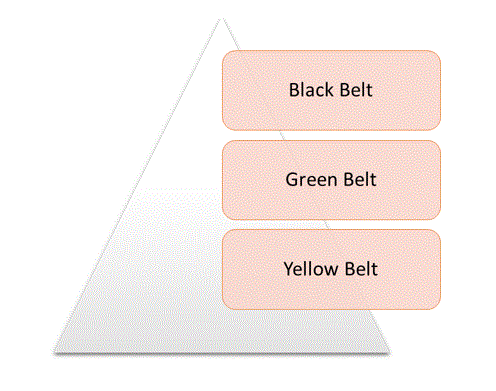Lean Six Sigma Organization Structure:
It is represented diagrammatically as:

The aim of the Six Sigma is to eliminate all kind of waste from the organisation. This method directs us to enhanced quality and effectiveness of all business processes. It was designed only for the manufacturing processes, but practitioners start using in the every aspect of the business. The Six Sigma plays an essential role in the leadership of an association.
The Lean Approach:
The Lean is a business tool which is used to simplify the business processes. The lean approach is relied on removing the waste steps for the production of a product. The Lean methodology is concerned about the value of something which is computable with the feature that whether the customer is eager to pay for it or not.
The processes which do not add value to the process are just eliminated from the equation. This results in highly efficient processes.
Comparing Six Sigma and Lean:
The Lean and Six Sigma systems have the same goal. They are based on reducing waste and make business yield efficiently. But both uses the different methods to achieve the goal. The main modification between both methods is that they classify the cause of waste another way.
The lean experts trust that the waste presence is due to unnecessary steps in the production process. The Unnecessary methods do not add value to the business. Both the methods helps business processes yield maximum output.
A great toolkit provides the complex problems to be solved efficiently. The main benefit of this online course is that you can attend both Lean and Six Sigma training from the single source.
Methods that make Lean Six Sigma work:
The Lean Six Sigma approach offers many new metrics which are to be used to quantify the performance of the system.
DFSS:
The DFDS stand for Design for Six Sigma. It is a development system which contains Define, Measure, Analyse, Design and Verify. This system progresses the new processes which are executed by the black belts and green belts.